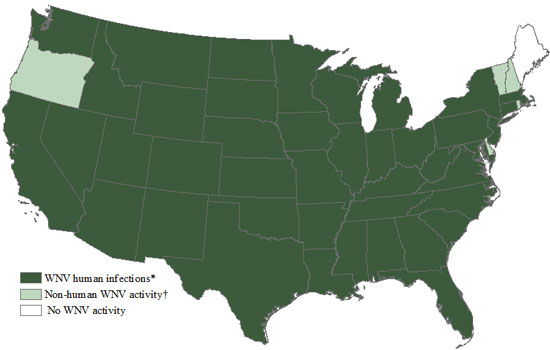Just to keep things in perspective in the United States, the mosquito borne virus that originated in Africa, West Nile virus (WNV) has killed 1,668 people from its first appearance in the states in 1999 through 2013. That’s 111 fatalities per year average for a disease that prior to 1999, the vast, I mean vast majority of Americans had no clue existed.
During that period we saw some 40,000 human cases of the disease as it spread across the nation and as far north as Canada.
We’ve had some mild years and some pretty severe years–almost 10,000 cases nationwide were seen in 2003, while two years ago, the state of Texas saw almost 2,000 cases alone.
Currently, the number of human WNV cases stands, ironically at 1,668 as of Oct. 28, including 58 deaths.
California to date is 2012’s Texas, leading the nation in both cases (654) and deaths (22).
First discovered in Uganda in 1937, West Nile virus is a mosquito-borne disease that can cause encephalitis, a brain inflammation.
According to the Centers for Disease Control and Prevention (CDC), approximately 80 percent of people (about 4 out of 5) who are infected with WNV will not show any symptoms at all.
Up to 20 percent of the people who become infected have symptoms such as fever, headache, and body aches, nausea, vomiting, and sometimes swollen lymph glands or a skin rash on the chest, stomach and back. Symptoms can last for as short as a few days, though even healthy people have become sick for several weeks.
About one in 150 people infected with WNV will develop severe illness. The severe symptoms can include high fever, headache, neck stiffness, stupor, disorientation, coma, tremors, convulsions, muscle weakness, vision loss, numbness and paralysis. These symptoms may last several weeks, and neurological effects may be permanent.
There is no specific treatment for WNV infection.
WNV is indigenous to Africa, Asia, Europe, Australia and now North America.



Useful, thanks. Sentence that starts “California” seems to have some sort of glitch/ typo (maybe auto-correct?) ….
生態系(蚊の遺伝子)を操作しても新たな脅威によってさらに重篤な感染が起きるだけだと、何故科学者たちは気が付かないのか?
I cannot understand why scientists don’t notice that new threats of more critical infection are occuring by operating an ecosystem (genes of mosquito).